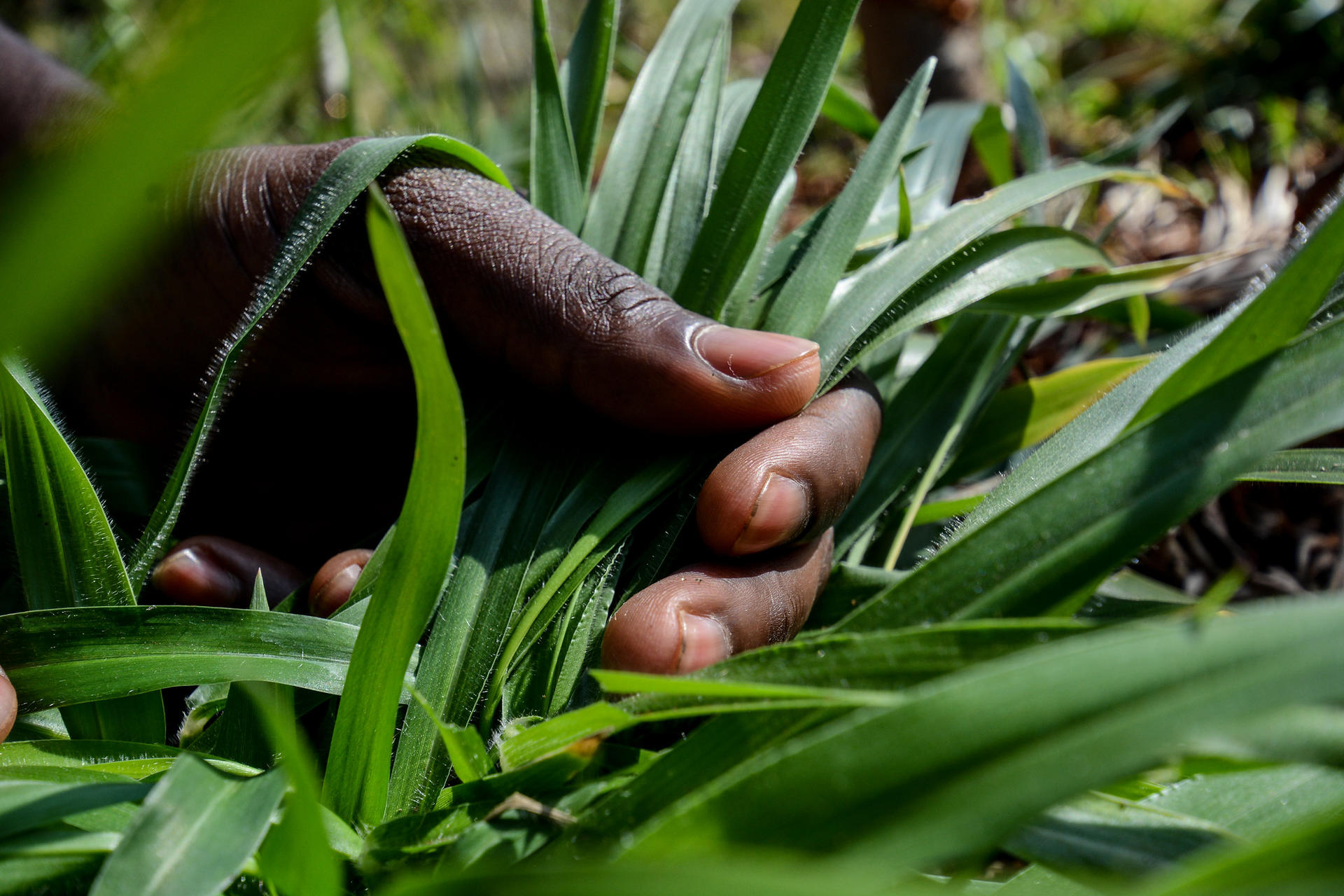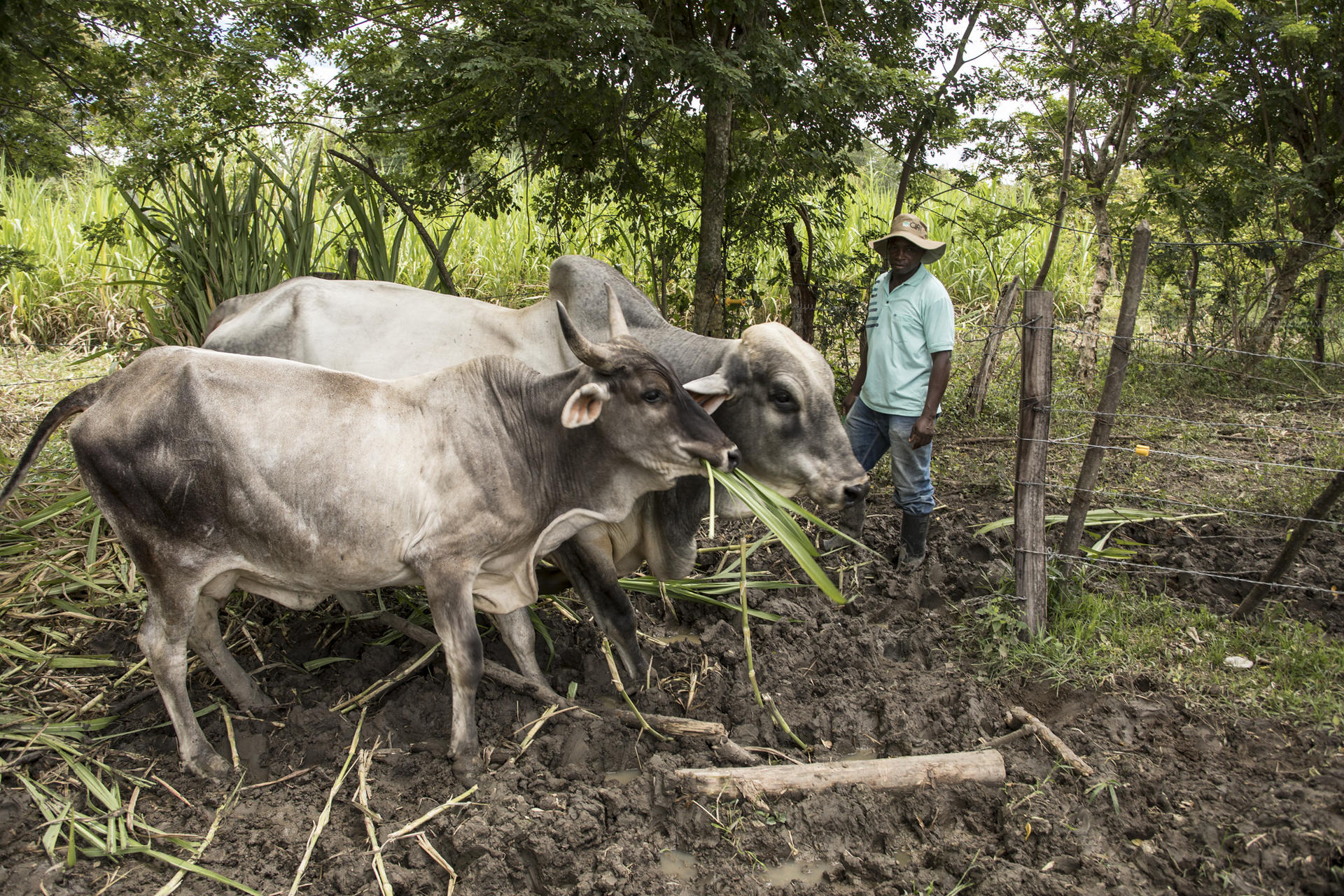2020 Annual Report Studying forages to reduce poverty and improve the environment

Decades of scientific advances have helped make tropical forages key to healthy livestock and improving ecosystems. A continued intensification of farmland that uses these technologies will be key to climate, economic, nutrition and ecosystem restoration goals.

Michael Peters
Tropical Forages Team LeaderIn more than 20 years at the CGIAR, I’ve seen our work on tropical forages – the myriad plants that livestock eat – make remarkable advances. We’ve helped countless smallholders transform their small, degraded land plots into healthy, productive systems.
A single, well-fed dairy cow can bring a rural family out of poverty. And farm-grown forages increase livestock health and reduce land needed to produce feed, which can decrease the pressure over the ecosystems and greatly increase on-farm productivity.
Several successes are due to longstanding relationships with private sector partners, government agencies and other development agencies. For example, we first brought to market a hybrid of Brachiaria (a robust, eco-friendly grass from Africa) 20 years ago.
With rapid advances in genomics and phenomics, we can produce varieties adapted to specific socio-economic and agro-ecological contexts for resilient livestock production, soil fertility enhancement, greenhouse-gas emission reduction and landscape restoration.
We firmly believe that improved tropical forages are essential to food system transformation.
Livestock-derived foods, which in addition to micronutrients contain essential amino acids and proteins, have great potential to efficiently help meet the higher nutrition requirements of pregnant and breastfeeding women and their infants. Although many foods other than livestock-derived foods possess these and other nutrients, such diverse foodstuffs are often unavailable, unaffordable or inaccessible by the poor.

2020 milestones
Our vast collection of applicable forages information is freely available to farmers, agricultural officers, governments, development agencies and partners at the Tropical Forages Selection Tool, which we revamped in 2020. It has more than 100,000 visits per month.
Our gold open-access ISI indexed journal, Tropical Grasslands-(Forrajes Tropicales), publishes quarterly state-of-the-art global research on tropical forages. It is indexed in all major abstract and citation databases of peer-reviewed literature and is consulted more than 100,000 times per year.
In 2020, our researchers published several peer-reviewed articles, including an analysis that showed livestock emission reductions are needed in Latin America to meet Paris Agreement targets. Other papers included a metanalysis forages benefits in sub-Saharan Africa and sustainable intensification options for ethnic minority farmers in the Lao uplands.
And in a major first, the forages team co-led the GANSO initiative, promoting a sustainable livestock certification program for beef farms in Colombian supermarkets to boost market-based climate solutions. It is a blueprint for other nations to follow.
Increasing impacts in the years to come
More farms need to use improved forages. To do this, our work will continue on accelerated breeding and scaling. Breeding will focus on climate change adaptation while maintaining our targets for productivity, and the control of pests and diseases.
Growth in forages adoption requires that we widen our scientific lens. We’re increasing our work on seed systems, foresight, social and cultural factors, policymaking and partnerships-for-impact that extend across One CGIAR and to other institutions.
Success also needs to be better measured. Intensified documentation of impacts will be essential to understanding markets, targeting our research, and tapping into sustainable funding sources.
Read more on:
Improving Crops
Research Highlight
A NEW STUDY OF THE TROPICAL FORAGES IN OUR GENEBANK
The Alliance’s forage collection – which includes some 1,600 accessions of 134 grass species and 21,000 accessions of 637 legume species – are of particular interest in the context of making livestock farmers better for the environment and to withstand the threats of climate change. A new study examines the forage collection and its future needs and potential.
